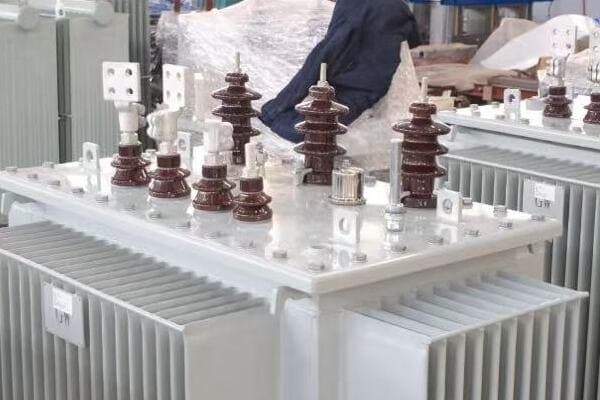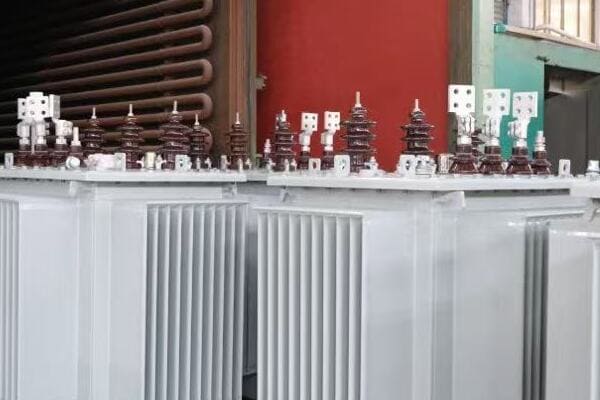Single-Line vs Wiring Transformer Diagrams: What’s the Difference and When to Use Each?
Are you struggling to choose the right transformer diagram for your project? You’re not alone. Many engineers and technicians find themselves confused about when to use single-line diagrams versus wiring diagrams. But what if you could easily determine which diagram type is best suited for your specific needs?
Single-line diagrams show simplified power flow with major components, ideal for quick system planning. Wiring diagrams detail every electrical connection, crucial for installation and troubleshooting. Understanding when to use each helps technicians, engineers, and buyers avoid costly mistakes in transformer applications.

In this comprehensive guide, I’ll walk you through the key differences between single-line and wiring transformer diagrams, and provide you with practical insights to help you make the right choice for your project. Whether you’re working on a large-scale utility project or a local power distribution system, this article will equip you with the knowledge to select the optimal diagram type for your needs.
Introduction – Why Diagram Types Matter in Transformer Projects?
Have you ever wondered why there are different types of transformer diagrams? The choice between a single-line diagram and a wiring diagram can significantly impact your project’s success. But why does this matter, and how can it affect your work?
Choosing the right diagram type is crucial for effective communication, accurate planning, and successful implementation of transformer projects. Single-line diagrams provide a quick overview for system planning, while wiring diagrams offer detailed information for installation and troubleshooting. Using the wrong type can lead to misunderstandings, errors, and costly delays.

The Importance of Proper Diagram Selection
Let’s explore why choosing the right diagram type is so critical:
- Communication Clarity
- Project Phase Alignment
- Cost and Time Efficiency
- Safety and Compliance
Communication Clarity
Different diagrams serve different purposes in communicating system information:
- Single-line diagrams: Provide a clear, high-level view of the system
- Wiring diagrams: Offer detailed connection information
I once worked on a project where miscommunication between the design team and installers occurred due to reliance on single-line diagrams alone. This led to confusion during installation, highlighting the need for both diagram types at different project stages.
Project Phase Alignment
Each project phase requires specific information:
- Planning and conceptual design: Single-line diagrams are ideal
- Detailed design and installation: Wiring diagrams become crucial
During a recent substation upgrade, we used single-line diagrams for initial stakeholder presentations and switched to detailed wiring diagrams for the installation phase. This approach ensured everyone had the right level of information at each stage.
Cost and Time Efficiency
Using the appropriate diagram can save significant time and resources:
- Single-line diagrams: Quick to create and review, perfect for early-stage decisions
- Wiring diagrams: Time-consuming but essential for accurate installation and maintenance
I recall a situation where a contractor attempted to use only single-line diagrams for a complex installation. This resulted in numerous on-site queries and delays, ultimately increasing project costs.
Safety and Compliance
Proper diagram use is crucial for safety and regulatory compliance:
- Single-line diagrams: Often required for permit applications and high-level safety reviews
- Wiring diagrams: Essential for detailed safety checks and compliance with electrical codes
In a recent industrial project, having both diagram types available during a safety audit helped us quickly address inspector concerns at both system and component levels.
Here’s a quick reference table for diagram type importance:
| Aspect | Single-Line Diagram | Wiring Diagram |
|---|---|---|
| Overview | Excellent | Limited |
| Detail Level | Low | High |
| Design Phase | Early | Late |
| Installation Use | Limited | Essential |
| Safety Review | High-level | Detailed |
Understanding the importance of proper diagram selection is the first step in ensuring your transformer projects run smoothly. As we delve deeper into the specifics of each diagram type, keep in mind how their unique characteristics align with different project needs and phases.
Remember, the goal is not just to have a diagram, but to have the right diagram at the right time. This understanding will guide you in making informed decisions throughout your transformer projects, ultimately leading to more efficient, safe, and successful outcomes.
What Is a Single-Line Transformer Diagram?
Have you ever been overwhelmed by the complexity of electrical system layouts? Single-line transformer diagrams offer a solution to this problem, but what exactly are they, and how do they simplify complex systems?
A single-line transformer diagram is a simplified representation of a power system, showing major components like transformers, switches, and buses using single lines and standard symbols. It provides a clear overview of power flow and system structure without the clutter of detailed connections, making it ideal for high-level planning and quick system understanding.

Understanding Single-Line Transformer Diagrams
Let’s break down the key aspects of single-line diagrams:
- Key Components and Notation
- Purpose and Benefits
- Limitations and Considerations
Key Components and Notation
Single-line diagrams use standardized symbols to represent:
- Transformers: Usually shown as circles with lines inside
- Circuit breakers: Represented by a square with a zigzag line
- Disconnectors: Often depicted as a small gap in the line
- Buses: Shown as thick horizontal or vertical lines
I remember a project where a client was initially confused by the symbols. After explaining the notation, they appreciated how quickly they could grasp the overall system layout.
Purpose and Benefits
The main advantages of single-line diagrams include:
- Quick system overview: Ideal for management presentations and initial planning
- Simplified troubleshooting: Helps identify major components and their relationships
- Easy modification: Allows for quick changes during conceptual design phases
During a recent utility-scale project, we used a single-line diagram to quickly illustrate different system configurations to stakeholders. This visual aid significantly streamlined the decision-making process.
Limitations and Considerations
While powerful, single-line diagrams have limitations:
- Lack of detailed connections: Not suitable for installation or detailed troubleshooting
- Simplified representation: May omit some important system details
- Potential for misinterpretation: Users must understand the diagram’s purpose and limitations
I once encountered a situation where an installer tried to use only a single-line diagram for a complex transformer installation. This led to confusion and delays, highlighting the need for more detailed diagrams in certain phases.
Here’s a quick reference table for single-line diagram characteristics:
| Aspect | Description | Importance |
|---|---|---|
| Simplicity | High-level view | Essential for quick understanding |
| Detail Level | Low | Limits use in detailed work |
| Modification Ease | High | Valuable in early design stages |
| Component Representation | Symbolic | Requires familiarity with symbols |
Best use cases for single-line transformer diagrams include:
- System planning and conceptual design
- High-level presentations to management or non-technical stakeholders
- Quick fault analysis and system navigation
- Regulatory submissions requiring overall system layouts
In my experience, the key to effectively using single-line diagrams is understanding their strengths and limitations. They excel at providing a "big picture" view but should be complemented with more detailed diagrams when moving into implementation phases.
As we move forward, we’ll explore how single-line diagrams compare to wiring diagrams, and when each is most appropriate. Understanding these differences will help you choose the right diagram type for each stage of your transformer projects, ensuring clear communication and efficient project execution.
What Is a Wiring Transformer Diagram?
Have you ever found yourself needing to trace every connection in a transformer system? While single-line diagrams provide a high-level overview, wiring diagrams offer the detailed information necessary for installation and troubleshooting. But what exactly is a wiring transformer diagram, and how does it differ from its simplified counterpart?
A wiring transformer diagram is a detailed electrical schematic that shows every connection, wire, and component in a transformer system. It includes specific information on terminal connections, wire gauges, and control circuits. These diagrams are essential for installation, maintenance, and troubleshooting, providing technicians with the precise information needed to work on complex transformer systems.

Diving Deep into Wiring Transformer Diagrams
Let’s explore the key aspects of wiring diagrams:
- Detailed Connection Mapping
- Component Representation
- Applications and Benefits
- Challenges in Creation and Interpretation
Detailed Connection Mapping
Wiring diagrams provide comprehensive connection information:
- Every wire and connection point is shown
- Wire gauges and types are specified
- Terminal block layouts are detailed
- Control circuits and auxiliary devices are included
I recall a complex industrial transformer installation where the wiring diagram was invaluable. It allowed us to precisely trace each connection, ensuring no errors were made during the intricate wiring process.
Component Representation
Wiring diagrams offer detailed representations of components:
- Transformers: Shown with all windings and taps
- Circuit breakers: Depicted with all poles and auxiliary contacts
- Relays and controls: Illustrated with all coils and contacts
- Instruments: Represented with their connections and scaling information
During a recent troubleshooting session, the detailed representation of a malfunctioning relay in the wiring diagram helped us quickly identify and resolve the issue, saving hours of downtime.
Applications and Benefits
Wiring diagrams are crucial for several aspects of transformer work:
- Installation: Provides exact connection information for technicians
- Troubleshooting: Allows for precise tracing of electrical paths
- Maintenance: Helps in understanding system intricacies for repairs
- Modifications: Essential for planning and implementing system changes
I once worked on upgrading an old transformer system where the original wiring diagram was invaluable. It allowed us to understand the existing setup and plan the upgrade with minimal disruption.
Challenges in Creation and Interpretation
While highly useful, wiring diagrams come with challenges:
- Time-consuming to create: Requires detailed knowledge of the entire system
- Complex to read: Can be overwhelming for those not familiar with electrical schematics
- Requires regular updates: Must be revised with any system changes
In a recent project, we faced issues with an outdated wiring diagram. This experience highlighted the importance of maintaining up-to-date documentation for all transformer systems.
Here’s a quick reference table for wiring diagram characteristics:
| Aspect | Description | Importance |
|---|---|---|
| Detail Level | Very High | Critical for precise work |
| Creation Time | Lengthy | Significant investment |
| Usability in Field | High | Essential for technicians |
| Modification Difficulty | Moderate to High | Requires careful updating |
Best use cases for wiring transformer diagrams include:
- Detailed installation and assembly work
- Comprehensive system troubleshooting
- Planning and executing system modifications
- Training technicians on specific system layouts
In my experience, the key to effectively using wiring diagrams is to ensure they are always up-to-date and accessible to those who need them. While they require more effort to create and maintain than single-line diagrams, their value in complex transformer work is unparalleled.
As we continue, we’ll compare wiring diagrams directly with single-line diagrams, helping you understand when to use each type. This knowledge is crucial for ensuring you have the right information at the right time throughout your transformer projects.
Key Differences Between Single-Line and Wiring Diagrams?
Are you finding it challenging to decide between using a single-line diagram or a wiring diagram for your transformer project? You’re not alone. Many professionals struggle to understand the key differences and when to use each type. But what if you had a clear comparison to guide your decision?
Single-line diagrams provide a simplified overview of the power system, ideal for high-level planning and quick understanding. Wiring diagrams offer detailed connection information, crucial for installation and troubleshooting. The main differences lie in their level of detail, purpose, and application in various project phases. Understanding these differences is key to choosing the right diagram for your specific needs.

Comparing Single-Line and Wiring Diagrams
Let’s break down the key differences:
- Level of Detail
- Purpose and Application
- Creation and Maintenance
- User Audience
Level of Detail
The most obvious difference lies in the amount of information presented:
| Feature | Single-Line Diagram | Wiring Diagram |
|---|---|---|
| Complexity | Low | High |
| Component Representation | Symbolic | Detailed |
| Connection Details | Minimal | Comprehensive |
| System Overview | Clear | Can be overwhelming |
I once worked on a project where the client was initially confused by the wiring diagram’s complexity. Showing them the single-line diagram first helped them grasp the overall system before diving into the details.
Purpose and Application
Each diagram type serves different purposes:
| Aspect | Single-Line Diagram | Wiring Diagram |
|---|---|---|
| Primary Use | System planning, conceptual design | Installation, troubleshooting |
| Project Phase | Early stages, high-level reviews | Detailed design, implementation |
| Fault Analysis | Quick, high-level | Detailed, component-level |
| Regulatory Submissions | Often sufficient | May be required for detailed reviews |
During a recent substation upgrade, we used single-line diagrams for initial planning and stakeholder presentations, then transitioned to wiring diagrams for the actual installation phase. This approach ensured everyone had the right level of information at each stage.
Creation and Maintenance
The effort required to create and maintain these diagrams differs significantly:
| Factor | Single-Line Diagram | Wiring Diagram |
|---|---|---|
| Creation Time | Relatively quick | Time-consuming |
| Updating Ease | Simple | Complex |
| Software Requirements | Basic CAD or drawing tools | Specialized electrical CAD software |
| Version Control Importance | Moderate | Critical |
I recall a situation where an outdated wiring diagram led to confusion during a maintenance operation. This experience highlighted the importance of rigorous version control, especially for detailed wiring diagrams.
User Audience
Different diagrams cater to different audiences:
| Audience | Single-Line Diagram | Wiring Diagram |
|---|---|---|
| Management | Preferred | Often too detailed |
| Engineers | Used for overview | Used for detailed work |
| Technicians | Limited use | Essential |
| Regulatory Bodies | Often sufficient | May be required for detailed review |
In a recent project presentation, I observed how single-line diagrams effectively communicated the system layout to executive stakeholders, while the engineering team relied heavily on the wiring diagrams for implementation details.
Key considerations when choosing between diagram types:
- Project Phase: Early planning favors single-line diagrams, while detailed design and implementation require wiring diagrams.
- Audience: Consider who will be using the diagram and for what purpose.
- Level of Detail Needed: Assess whether a high-level overview or detailed connection information is required.
- Time and Resources: Factor in the time and expertise needed to create and maintain each diagram type.
In my experience, the most successful projects use both diagram types at appropriate stages. Starting with a single-line diagram helps establish a clear overall vision, while transitioning to wiring diagrams ensures precise implementation.
Remember, the goal is not to choose one diagram type over the other, but to use each type effectively at the right time and for the right purpose. By understanding these key differences, you can ensure that your transformer projects benefit from clear communication and accurate information at every stage.
When to Use Each Type of Diagram?
Are you unsure about which transformer diagram to use in different project scenarios? This common dilemma can lead to miscommunication and errors if not addressed properly. But how can you confidently choose the right diagram type for each situation in your transformer projects?
Use single-line diagrams for high-level planning, system overviews, and conceptual designs. They’re ideal for management presentations and initial stakeholder discussions. Wiring diagrams are essential for detailed design, installation, troubleshooting, and maintenance. Choose based on your project phase, audience, and the level of detail required. Using the right diagram at the right time ensures effective communication and project success.
Choosing the Right Diagram for Your Project Phase
Let’s explore when to use each diagram type across different project scenarios:
- Conceptual Design and Planning
- Detailed Engineering and Design
- Installation and Construction
- Operation and Maintenance
- Troubleshooting and Repairs
Conceptual Design and Planning
At this early stage, single-line diagrams are typically the best choice:
- Provide a clear system overview
- Facilitate high-level decision making
- Useful for initial stakeholder presentations
I remember a utility-scale project where we used a single-line diagram to present different system configurations to the board of directors. The simplicity of the diagram allowed for quick understanding and faster decision-making on the overall project direction.
Detailed Engineering and Design
As the project progresses, wiring diagrams become crucial:
- Essential for detailed component selection
- Necessary for precise connection planning
- Required for comprehensive design reviews
During a recent transformer upgrade project, transitioning from single-line to wiring diagrams allowed our engineering team to identify potential issues with control circuit integration that weren’t apparent in the simplified view.
Installation and Construction
At this stage, both diagram types play important roles:
- Single-line diagrams: Provide overall guidance and context
- Wiring diagrams: Essential for accurate installation and connections
I once witnessed a installation delay caused by reliance on single-line diagrams alone. The team quickly realized they needed the detailed wiring diagrams to properly connect all components, highlighting the importance of having both diagram types available during this phase.
Operation and Maintenance
For day-to-day operations and routine maintenance:
- Single-line diagrams: Useful for quick system navigation and understanding
- Wiring diagrams: Critical for detailed maintenance procedures and troubleshooting
In a recent maintenance training session, we used single-line diagrams to explain system layout to new technicians, then delved into wiring diagrams for specific maintenance tasks. This approach significantly improved the team’s overall understanding and efficiency.
Troubleshooting and Repairs
When issues arise, both diagram types become valuable:
- Single-line diagrams: Help in quickly identifying the affected area
- Wiring diagrams: Essential for pinpointing exact fault locations and planning repairs
I recall a critical fault scenario where we first used the single-line diagram to isolate the problem area, then relied on the wiring diagram to trace the exact fault location. This two-step approach significantly reduced downtime.
Here’s a quick reference table for when to use each diagram type:
| Project Phase | Single-Line Diagram | Wiring Diagram |
|---|---|---|
| Conceptual Design | Primary tool | Not typically used |
| Detailed Engineering | Supplementary | Primary tool |
| Installation | Context provider | Essential guide |
| Operation | Quick reference | Detailed resource |
| Troubleshooting | Initial assessment | Detailed analysis |
Key considerations for choosing the right diagram:
-
Audience Knowledge: Consider the technical expertise of your audience. Management might prefer single-line diagrams, while technicians need wiring diagrams.
-
Project Complexity: More complex systems may require earlier introduction of wiring diagrams in the project lifecycle.
-
Regulatory Requirements: Some phases may legally require specific diagram types. Always check relevant standards and regulations.
-
Time Constraints: In time-sensitive situations, single-line diagrams can provide quick insights, but don’t neglect wiring diagrams for critical details.
-
Communication Purpose: Determine whether you need to convey an overall concept (single-line) or specific details (wiring).
In my experience, the most successful projects maintain both diagram types throughout the project lifecycle, using each at appropriate times. I’ve seen projects stumble when they relied too heavily on one type, missing critical insights that the other could provide.
Remember, the goal is to ensure clear communication and accurate information at every project stage. By carefully considering your current needs and audience, you can choose the right diagram type to support your project’s success. As you move through different phases, be prepared to switch between diagram types as needed, always ensuring you have the right level of detail for the task at hand.
Real Project Examples: Diagram Misuse & Lessons Learned?
Have you ever wondered about the real-world consequences of using the wrong type of transformer diagram? Many professionals have faced challenges due to diagram misuse, but what can we learn from these experiences to avoid similar pitfalls in our own projects?
Misusing transformer diagrams can lead to costly errors, safety hazards, and project delays. Common mistakes include relying solely on single-line diagrams for installation or using outdated wiring diagrams for modifications. These errors can result in incorrect connections, equipment damage, and even system failures. Learning from these real-world examples helps prevent similar issues in future projects.

Case Studies: When Diagram Choice Goes Wrong
Let’s explore some real project examples and the valuable lessons they teach:
- Installation Errors Due to Diagram Misuse
- Safety Incidents from Incomplete Information
- Project Delays Caused by Diagram Confusion
- Cost Overruns from Rework
Case 1: Installation Errors Due to Diagram Misuse
Scenario: A substation upgrade project relied solely on single-line diagrams for installation.
Outcome: Multiple wiring errors led to equipment malfunction during commissioning.
Lesson Learned: Always use detailed wiring diagrams for installation work, even if single-line diagrams are available for overview.
I was called in as a consultant on this project after the issues were discovered. The team had assumed the single-line diagram provided sufficient information, not realizing the critical details they were missing. We had to spend additional time and resources correcting the wiring, significantly delaying the project completion.
Case 2: Safety Incidents from Incomplete Information
Scenario: Maintenance team used an outdated wiring diagram for troubleshooting a transformer.
Outcome: A technician received an electric shock due to an undocumented circuit modification.
Lesson Learned: Maintain up-to-date wiring diagrams and ensure all modifications are promptly documented.
This incident highlighted the critical importance of diagram accuracy and version control. We implemented a new system for updating and distributing the latest diagram versions to all relevant personnel, significantly improving safety protocols.
Case 3: Project Delays Caused by Diagram Confusion
Scenario: Engineering team provided only complex wiring diagrams to stakeholders for approval.
Outcome: Confusion and multiple revision requests delayed project kickoff by several weeks.
Lesson Learned: Use single-line diagrams for initial stakeholder communications, then progress to detailed wiring diagrams as needed.
I was part of the review team for this project. The complexity of the wiring diagrams overwhelmed non-technical stakeholders, leading to unnecessary questions and delays. We later introduced simplified single-line diagrams, which greatly improved understanding and accelerated the approval process.
Case 4: Cost Overruns from Rework
Scenario: Contractor used single-line diagrams for material procurement in a large transformer project.
Outcome: Incorrect cable types and quantities were ordered, requiring expensive rush orders and rework.
Lesson Learned: Always refer to detailed wiring diagrams for specific material and equipment requirements.
This case taught us the importance of using the right diagram for the right purpose. The project manager now insists on reviewing both single-line and wiring diagrams before finalizing any major procurement decisions.
Here’s a summary table of these case studies:
| Case | Diagram Misuse | Consequence | Key Lesson |
|---|---|---|---|
| Installation Error | Single-line only | Equipment malfunction | Use wiring diagrams for installation |
| Safety Incident | Outdated wiring diagram | Electric shock | Keep diagrams updated |
| Project Delay | Complex wiring diagrams only | Stakeholder confusion | Start with single-line for overview |
| Cost Overrun | Single-line for procurement | Incorrect materials | Use wiring diagrams for specifics |
Key takeaways from these real-world examples:
- Always use the appropriate diagram type for the task at hand.
- Maintain and update both single-line and wiring diagrams throughout the project lifecycle.
- Consider your audience when presenting diagrams, and choose the type that best communicates your message.
- Implement a robust system for diagram version control and distribution.
- Train team members on the proper use and interpretation of both diagram types.
In my experience, these lessons have proven invaluable in preventing similar issues in subsequent projects. By sharing these experiences, I hope to help others avoid the pitfalls of diagram misuse and improve overall project outcomes.
Remember, the choice between single-line and wiring diagrams isn’t just a technical decision – it’s a critical factor in project success, safety, and efficiency. By learning from these real-world examples, we can make more informed choices and ensure our transformer projects run smoothly from conception to completion.
Summary: Diagram Choice Affects Cost, Safety, and Efficiency?
Are you aware of how significantly your choice of transformer diagram can impact your project’s bottom line, safety record, and overall efficiency? Many professionals underestimate the far-reaching effects of this seemingly simple decision. But how exactly does diagram selection influence these crucial aspects of transformer projects?
Choosing the right transformer diagram type directly affects project costs, safety measures, and operational efficiency. Single-line diagrams support quick decision-making and overview, potentially saving time in planning stages. Wiring diagrams ensure accurate installation and maintenance, reducing costly errors and safety risks. Using both types appropriately throughout a project lifecycle optimizes resource allocation, enhances safety protocols, and improves overall system reliability.

The Ripple Effect of Diagram Selection
Let’s explore how diagram choice influences key project aspects:
- Cost Implications
- Safety Considerations
- Efficiency and Performance
- Long-term Maintenance and Operations
Cost Implications
Proper diagram selection can significantly impact project costs:
- Planning Phase: Single-line diagrams facilitate faster decision-making, potentially reducing planning costs.
- Installation: Accurate wiring diagrams prevent costly installation errors and rework.
- Procurement: Detailed wiring diagrams ensure correct material ordering, avoiding expensive rush orders or surplus inventory.
I recall a project where reliance on single-line diagrams for material procurement led to significant cost overruns. The lack of detailed information resulted in incorrect cable specifications, requiring last-minute purchases at premium prices.
Safety Considerations
Diagram choice plays a crucial role in maintaining safety:
- Risk Assessment: Single-line diagrams help identify high-level safety concerns quickly.
- Maintenance Safety: Detailed wiring diagrams are essential for safe maintenance procedures.
- Emergency Response: Both diagram types are crucial for effective emergency planning and response.
During a recent safety audit, having both single-line and wiring diagrams readily available allowed us to demonstrate comprehensive safety protocols, from system-level hazard identification to detailed lockout/tagout procedures.
Efficiency and Performance
The right diagrams can enhance overall system efficiency:
- System Optimization: Single-line diagrams aid in identifying potential system improvements.
- Troubleshooting: Wiring diagrams significantly reduce downtime during fault diagnosis.
- Upgrades and Modifications: Accurate diagrams of both types facilitate smoother system upgrades.
I’ve seen how efficient troubleshooting with proper wiring diagrams can reduce downtime from days to hours, significantly impacting operational efficiency and cost savings.
Long-term Maintenance and Operations
Diagram choice affects long-term operational aspects:
- Training: Single-line diagrams are excellent for new staff orientation.
- Maintenance Planning: Wiring diagrams are crucial for developing comprehensive maintenance schedules.
- Asset Management: Both diagram types contribute to effective long-term asset management strategies.
In a recent transformer fleet management project, maintaining updated versions of both diagram types allowed for more effective lifecycle planning and predictive maintenance strategies.
Here’s a summary table of how diagram choice impacts various project aspects:
| Aspect | Single-Line Diagram Impact | Wiring Diagram Impact |
|---|---|---|
| Cost | Reduces planning time | Prevents installation errors |
| Safety | Aids high-level risk assessment | Ensures safe maintenance |
| Efficiency | Supports system optimization | Facilitates quick troubleshooting |
| Long-term Operations | Useful for staff training | Essential for detailed maintenance |
Key considerations for maximizing the benefits of proper diagram selection:
- Integrate Both Types: Use single-line and wiring diagrams in tandem throughout the project lifecycle.
- Update Regularly: Keep both diagram types current to ensure ongoing relevance and safety.
- Accessibility: Ensure relevant team members have access to the appropriate diagrams when needed.
- Training: Invest in training staff on how to read and use both diagram types effectively.
- Digital Integration: Consider integrating diagrams into digital asset management systems for easier updates and access.
In my experience, projects that strategically use both single-line and wiring diagrams throughout their lifecycle tend to run more smoothly, encounter fewer costly surprises, and maintain better safety records. I’ve seen how this approach not only improves immediate project outcomes but also enhances long-term operational efficiency and asset management.
Remember, the impact of your diagram choice extends far beyond the immediate project phase. By carefully considering when and how to use each type of diagram, you can positively influence your project’s cost-effectiveness, safety standards, and overall efficiency. This strategic approach to diagram selection is a key factor in achieving successful, sustainable transformer projects that stand the test of time.
Conclusion
Choosing between single-line and wiring transformer diagrams significantly impacts project success. Single-line diagrams excel in planning and overview, while wiring diagrams are crucial for detailed work and safety. Using both types appropriately throughout a project’s lifecycle optimizes costs, enhances safety, and improves efficiency. Always consider your project phase and audience when selecting diagram types.
Remember, at chbeb-ele, we’re not just sharing information – we’re empowering you to be part of the solution in creating a secure, clean, and efficient energy future. Let’s continue this journey together.
Free CHBEB Transformer Catalog Download
Get the full range of CHBEB transformers in one catalog.
Includes oil-immersed, dry-type, pad-mounted, and custom solutions.
Quick Message
Request A free quote
We'd like to work with you
- +86 15558785111
- [email protected]
- +86 15558785111
What We Do
CHINA BEI ER BIAN (CHBEB) GROUP, with 218 million in registered capital, originated from Beijing Beierbian Transformer Group. Headquartered in Beijing for R&D, it operates major production bases in Nanjing and Yueqing, producing high-quality products.
Latest Product
address
BeiJing
No 3,RongJing East Road,BeiJing Economic Technological Development Area,BeiJing,China
JiangSu
No 7️Xiangfeng Road,Jiangning,NanJing,JiangSu,China
WenZhou
No.211, Wei 16 Road, Industrial Zone, Yueqing, Wenzhou, Zhejiang, China.
XiangYang Industrial Zone ,YueQing,WenZhou,ZheJiang,China
contact us
- [email protected]
- +86 13057780111
- +86 13057780111
- +86 15558785111
Copyright © Bei Er Bian Group



